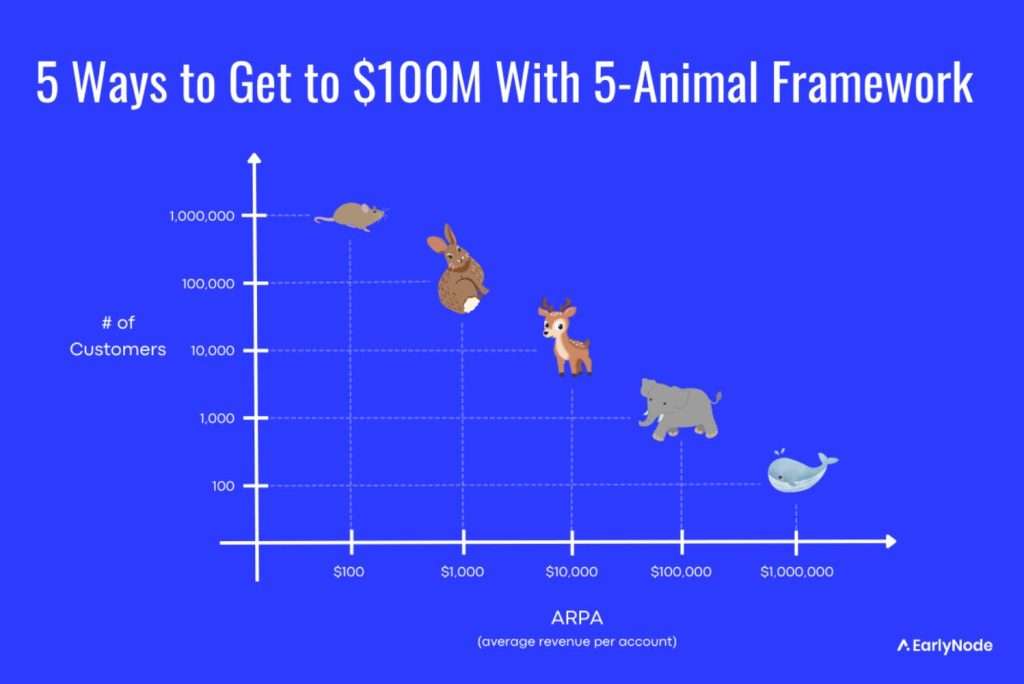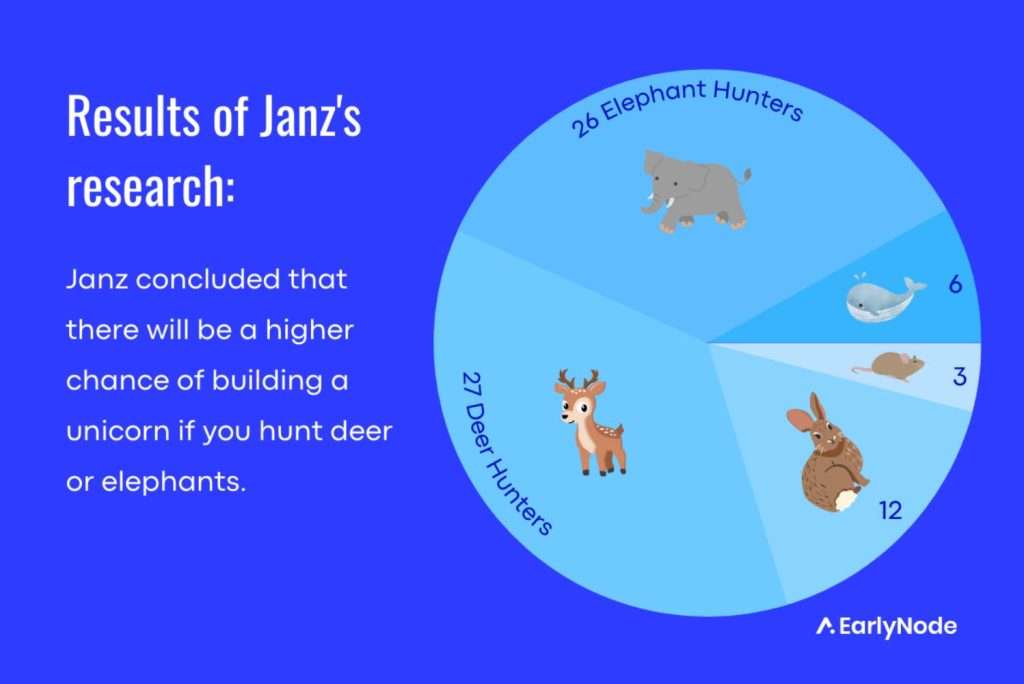🦄 Get to $100m ARR with the “5 Animals Framework” by Christoph Janz

In the SaaS Operator newsletter from 28 March 2023:
We did a 25-hour deep dive into every juicy insight Janz has ever tossed out into the founders’ community. Now we’re serving up his most actionable tips for growing and scaling SaaS startups.
Here’s what you’ll learn:
- How to build a unicorn by targeting the right market segment.
- Acquisition strategies based on ARPA.
- Janz’s three rules of freemium.
The 5 Animals Framework
Christoph Janz is a big name in the SaaS community. His famous “5 Ways to $100M” chart helps founders think strategically about their customer segment and strategize around it.
It shows you different customer segments based on their ARPA and how many of those customers you need to hit the $100M ARR and become a SaaS unicorn.
His approach is also called the “5 Animals Framework”. Each animal represents a certain customer segment based on the ARPA.

The X-axis here represents the ARPA for each customer segment (animal), and the Y-axis represents the number of customers you’d need to get to $100M.
This framework tells you not just how many customers you need for a given ARPA to hit that sweet $100M ARR, but also what this might mean for your sales, product, and marketing strategy.
Choose the animal you hunt wisely
To figure this out, Christoph Janz studied 74 public SaaS companies with unicorn status to find out what animal they are “hunting”.
He categorized them based on the following logic:
- Mice = ARPA < $333
- Rabbits = $333 to $3300 ARPA
- Deers = $3300 to $33k ARPA
- Elephants = $33k to $333k ARPA
- Whales = ARPA > $333k
Janz found that two-thirds of the 74 SaaS unicorns were “deer” and “elephant” hunters. In other words, you have a higher chance of building a unicorn with a product that can give you an ARPA of $3.3k to $333k. And you need to target a customer segment that can pay this amount.
Here’s the pie chart of the results of Janz’s research.

The CAC sweet spot for each customer segment
It is obvious that the lower your ARPA, the less you can spend to acquire a customer.
But there are plenty of “zombie” startups that have product market fit but struggle to find scalable customer acquisition channels in line with their LTV.
Here’s what Christoph Janz suggests your CAC should be based on your LTV and Annual Churn Rate:
- For mice hunters with an annual churn rate of approx. 50% and an LTV of around $170, CAC should be < $40.
- For rabbit hunters with an annual churn rate of approx. 30% and an LTV of around $2800, CAC should be < $700.
- For deer hunters with an annual churn rate of approx. 15% and an LTV of around $57000, CAC should be < $13000.
- For elephant hunters with an annual churn rate of approx. 10% and an LTV of around $850k, CAC should be < $130k.
- For whale hunters with an annual churn rate of approx. 7% and an LTV of around $12M, CAC should be < $1.3M.
Acquisition strategies for each customer segment
When you’re hunting animals, you use different tools depending on what you’re trying to hunt. Similarly, when you’re targeting a specific customer segment, you need different ways to acquire the customers.
Here’s an overview of profitable and sustainable ways to acquire customers and hit the $100M mark, depending on the animal you’re hunting.
🐁 Becoming a unicorn with ARPA < $333
- Most leads need to be organic.
- Your product will probably need a viral loop.
- Considering your ARPA of $100 and a 10% trial-to-paid conversion rate, you’d need 10 million trial signups to hit the $100M mark.
- No sales budget because conversion must be completely self-service for sustainability.
🐇 Becoming a unicorn with ARPA < $3,300
- Most leads need to be inbound.
- Sales must be “one-call close”.
- With an ARPA of $1000 and a 10% trial-to-paid rate, you’d need 1 million signups to hit the $100M mark.
- You can build a sales team. But with $80k OTE your AEs have to close 230 customers annually – 1 per working day, which is no easy feat.
🦌 Becoming a unicorn with ARPA < $33,000
- Your biggest challenge is to scale lead generation at stable costs per MQL.
- Outbound often doesn’t work at this level.
- Build an inside sales team and spend significantly on marketing.
- If you have a 5% MQL-to-Win rate with ARPA of $10,000, you’d need 200,000 MQLs
🐘 & 🐋 Becoming a unicorn with ARPA > $33k
- At this level, the scaling playbook is clearer.
- Your biggest challenge is to raise a lot of money upfront and survive hellish pilot programs.
- For sales, you need steak dinners, field marketing, and account-based marketing.
- With $1-10M LTV, you can spend a ton of money on acquisition.
3 Rules of Freemium
Christoph Janz has a bit of a love/hate relationship with the freemium model. And many SaaS founders can relate to his mixed feelings.
He thinks freemium can lead to incredible success if done right. But if you try too hard to become the next Dropbox, freemium can also cannibalize your paid user base while draining your company’s precious engineering and customer support resources.
To determine if freemium is right for you, ask yourself these 3 questions.
1️⃣ Does your paid plan have an 80–90% gross margin?
If not, freemium may become too expensive due to high costs.
2️⃣ Does your free plan attract the right audience?
If your free users are totally different from the paying customers, your free-to-paid conversion rate will be too low. Plus, you could end up focusing on making the product better for your free users rather than the paid ones.
3️⃣ Is your product inherently viral?
No? Freemium may be less likely to work for you.
Who should we cover next? If you have a SaaS expert in mind, let us know by sending us an email at saas@earlynode.com.




